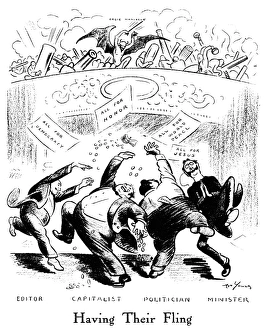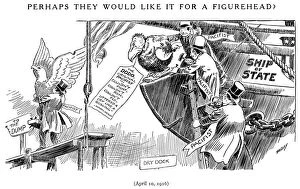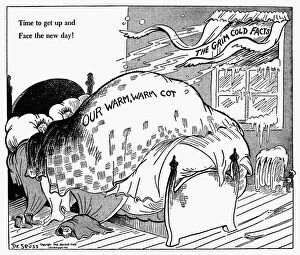Pro War Collection
"Pro-War: A Historical Perspective on the Complexities of Conflict" War has always been a contentious topic, evoking strong emotions and sparking heated debates
All Professionally Made to Order for Quick Shipping
"Pro-War: A Historical Perspective on the Complexities of Conflict" War has always been a contentious topic, evoking strong emotions and sparking heated debates. Throughout history, various cartoons and events have shed light on different perspectives surrounding war. In 1914, as Kaiser Wilhelm II declared war against Britain, cheering crowds filled the streets of Berlin in support of their leader's decision. However, not everyone shared this enthusiasm for conflict. Anti-war sentiments were expressed through powerful cartoons like "Having Their Fling" by Art Young in 1917 during World War I. This thought-provoking artwork questioned the motives behind those advocating for war and challenged pacifist ideals. Fast forward to World War II when American cartoonist Dr. Seuss (Theodor Geisel) used his artistic talent to criticize isolationism in the United States. His cartoon published in PM on May 22nd, 1941 depicted a tired woodpecker after pecking down the last tree - symbolizing America's reluctance to join the war effort. As Hitler invaded Russia in August 1941, another Dr. Seuss cartoon appeared in PM titled "Communique: The annihilation is proceeding according to schedule. " This satirical piece highlighted Hitler's aggression while emphasizing the importance of supporting the Allied effort against Nazi Germany. Moving ahead to more recent times, Gene Basset's cartoon from 1965 captured Lyndon Johnson amidst domestic turmoil during Vietnam War protests. It showcased how conflicts can divide nations internally even as they fight external battles. In contrast to anti-war demonstrations during Vietnam War protests in 1967, there were also pro-war rallies supporting American soldiers fighting overseas. These displays demonstrated that opinions regarding warfare are multifaceted and diverse within any society. Throughout these historical moments captured through art and events alike, it becomes evident that attitudes towards war are complex and ever-evolving.











